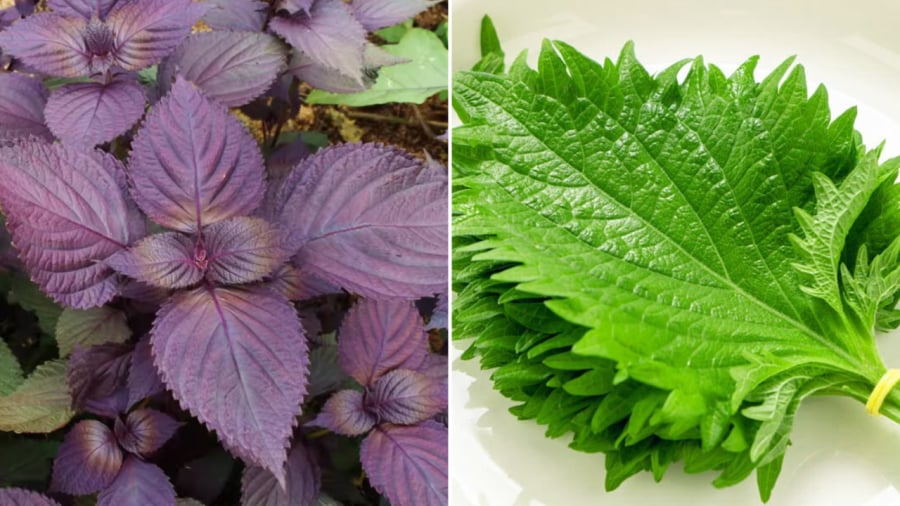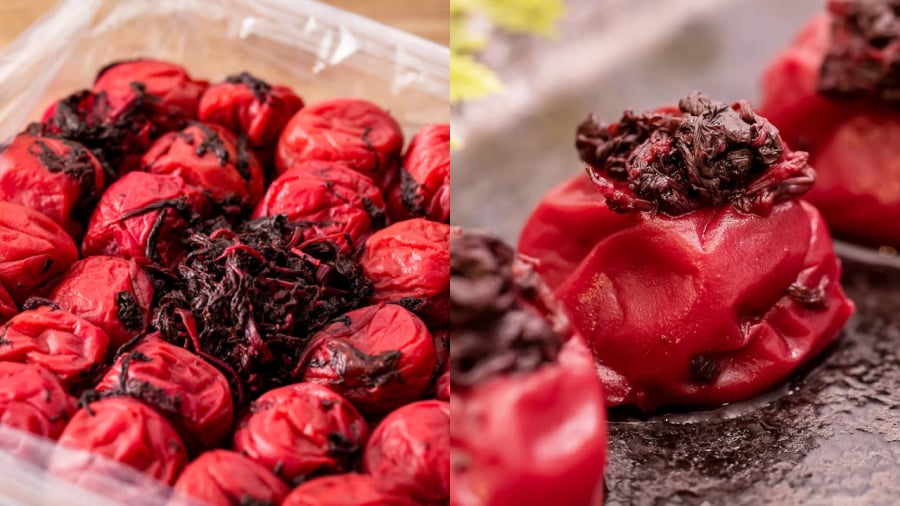The leaves mentioned here are perilla leaves, known as “shiso” in Japanese. Perilla leaves are a familiar herb in Japanese cuisine, often used to garnish and flavor dishes. The Japanese consider perilla leaves a treasure, even referring to them as “resurrection leaves.”
In Japan, perilla leaves are highly valued and often imported from Vietnam at a cost of 500-700 VND per leaf. In contrast, in Vietnam, perilla leaves are sold in bundles at a much lower cost. These leaves are used in various ways, including making herbal tea, consuming them raw with noodles or salads, and cooking them in soups or porridge.
Perilla leaves are also known for their medicinal properties, traditionally used to treat colds, detoxify the body, improve skin health, and boost immunity.
Perilla Leaves and Sashimi: A Classic Combination
Sashimi, a staple of Japanese cuisine, consists of fresh, raw fish or seafood. Perilla leaves are an essential accompaniment to sashimi, not just for their aesthetic appeal but also for their health benefits. Seafood tends to be cold in nature, which can cause digestive issues for some people. Perilla leaves, with their aromatic fragrance, slight spiciness, and warming properties, help balance the temperature and aid digestion, especially for those with sensitive stomachs. The leaves also help mask the fishy odor of fresh seafood and support overall digestion.
In Japan, there are two types of perilla leaves: green perilla (aoshiso), typically paired with sashimi, and red perilla (akashiso), commonly used for making drinks and food coloring.
In Japan, perilla leaves are sold individually and can be quite expensive, with 10 leaves costing around 100 yen (approximately 20,000 VND).

Perilla Leaf Drink: A Refreshing Summer Treat
The Japanese also enjoy perilla leaf drink, especially during hot summer days. Made from red perilla leaves, this beverage has a slightly sour, spicy, and sweet taste, offering cooling and detoxifying effects on the body during hot weather. In Vietnam, perilla leaf tea is also consumed for its cleansing, skin-enhancing, and immunity-boosting properties, as well as for preventing common ailments like colds and flu.
Perilla Leaves in Pickled Plums: A Colorful and Flavorful Combination
Pickled plums, or “umeboshi” in Japanese, are often made with perilla leaves to enhance their flavor and appearance. The red perilla leaves give the plums a beautiful red color, and the leaves themselves have antibacterial properties that help extend the shelf life of the pickled plums. Pickled plums are commonly used as a condiment, added to rice, or used to make tea or other beverages.

Perilla Leaves in Traditional Japanese Dishes
Perilla leaves are integral to various traditional Japanese dishes. For example, “shiso maki” is a dish where perilla leaves are rolled with chestnuts, sesame seeds, and miso paste, often enjoyed with sake or hot tea. Perilla leaves are considered a signature ingredient in Japanese cuisine, adding unique flavor and health benefits to numerous dishes.

































